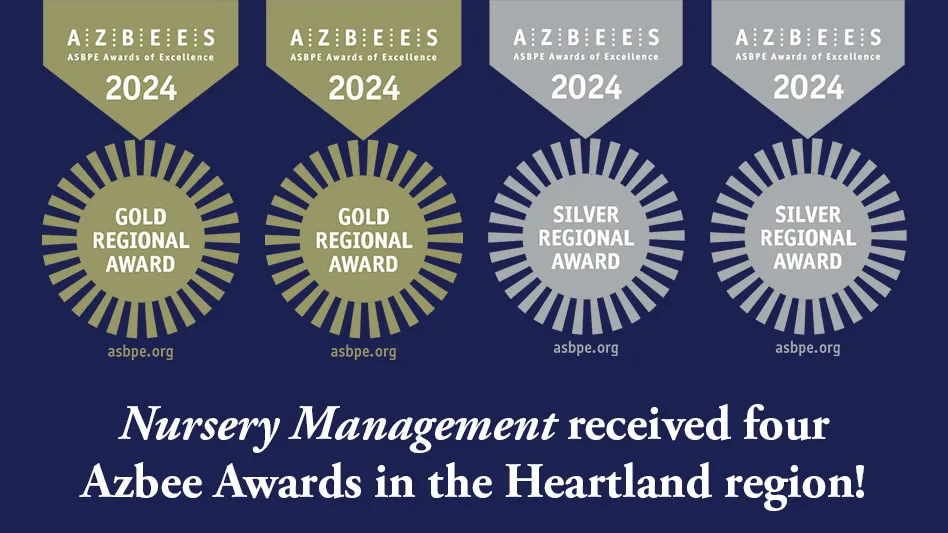

From handshakes to hard work, understanding the nuanced differences between the American and Latino cultures can lead to a more productive workplace.
This was the message during the webinar “Lost in Translation: The Five Things Businesses Must Understand About the Latinx Culture.” The education was sponsored by the Illinois Landscape Contractors Association (ILCA) and went live earlier in November. Given that Spanish-speakers and Latinx employees make up an enormous amount of the green industry’s workforce, understanding ways to bridge cultural gaps became imperative to speaker Bernie Carranza, the manager at Lotus Farms Chicago.
But before Carranza told attendees some of the lessons he’s learned as both a manager and member of the Latino community, Donna Vignocchi Zych, ILCA president, opened up the webinar.
“I deeply believe that this seminar isn’t just about getting more performance out of our teams,” she says. “It’s about bridging an essential gap and how our different cultures interpret words, actions, gestures, hierarchies and traditions. When employees feel safe, they have the ability to excel and better their collective lives.”
Here’s some of what was discussed during the webinar:
DIVERSE CULTURES. First, it’s important to understand exactly what demographic of people you’re referring to when you say “Latino.” In this case, it’s anyone from a Spanish-speaking country. Latinx is a more recent term that replaces the “a” or the “o” in Latina and Latino to make the term gender-neutral. And in his experience, Carranza says people who were originally born in one of these Spanish-speaking countries identify themselves as Hispanic, while those born in the U.S. with familial ties to other countries label themselves as Latino. He made it clear, however, that they can ultimately determine how they’d like to be identified.
The presentation was more geared toward Latinos who had not acculturated to American culture. Many are from Mexico; the complicating factor is that their experiences and cultural influences are different depending on what area of Mexico they’re from.
“The employer, when appropriate, should discuss with their Latino employees the cultural differences that exist and how to make everyone comfortable,” he says. “There are differences in simple, everyday interactions. The more we become familiar with these, the better communication we have.”
As it pertains to showing these employees respect, simple things like hand gestures and body language go a long way. Directly looking at someone’s eyes during serious conversations can be viewed as a challenge to his authority, and handshakes for Latinos are supposed to be soft to the touch rather than firm and rigid. Greetings in American culture are brief and to the point, while in Latino culture, they’re more warm, welcoming and expected.
Employers should talk about those differences and clarify with the employee that they're not trying to upstage them with direct eye contact, for example.
EDUCATION. Latinos prefer cooperative learning environments rather than competitive. As an example, Carranza recalls helping other cousins through school lessons growing up rather than trying to outdo them. This carries into the workplace, as training at a company should be done in more of a group setting than individually.
Carranza recommended allowing for smaller meetings to go on during larger meetings for those who learn most comfortably in a communal way. In his experience, these smaller groups lead to more productivity from his Latino workers as they explain to one another what they’ve learned. This is particularly important should language barriers exist at the company.
Another challenge is understanding that Latinos “don’t know,” even when they do, Carranza says. This means that they’d rather not embarrass somebody leading a meeting by upstaging them with the correct answer, even if it means sitting on vital information. This can be avoided by encouraging them to speak up often.
“We should encourage them to ask questions,” Carranza says. “Our style is more formal. What that means is that if you’re the presenter, if you’re the authority of the person presenting, there is this tendency to not interrupt you.”
UNDERSTANDING AMBITION. Latinos often credit their achievements to fate or religious circumstances rather than their own ability, Carranza says.
“We look down at our shoes — we downplay our successes,” he says. “When something good happens to us, we don’t credit our own hard work.”
He said because of this humility, Latinos are often labeled as unambitious. Some miss out on raises or bonuses because of this trait. Their politeness can lead to Americans viewing them as subservient.
As Carranza put it, the squeaky wheel gets the grease, and sometimes, people with bad manners get what they want. Latinos’ ambition for career progression is demonstrated quietly, he says, and “the key for you is recognizing that ambition and directing it.”
Carranza says sometimes, Latinos struggle to speak up when things get difficult because they have adopted a culture of hard work and pride in their company. He said it’s up to employers to listen to employees and ask them proactively how the work is going.
“Working hard is in our culture, it’s in our DNA,” he says. “What can we do? We encourage them, we empower them.”
For more: www.ilca.net; http://bit.ly/ILCA_Culture

Explore the January 2021 Issue
Check out more from this issue and find you next story to read.
Latest from Nursery Management
- Proven Winners introduces more than 100 new varieties for 2025
- CIOPORA appoints Micaela Filippo as vice secretary-general
- Registration opens for Darwin Perennials Day
- April 2024 issue recap
- U.S. Department of Labor finalizes farmworker protection rule
- Azo Root is now available from Harrell’s
- Smith Gardens assumes operations of Skagit Horticulture
- Garden Media Group announces the fifth annual Women in Horticulture Week





